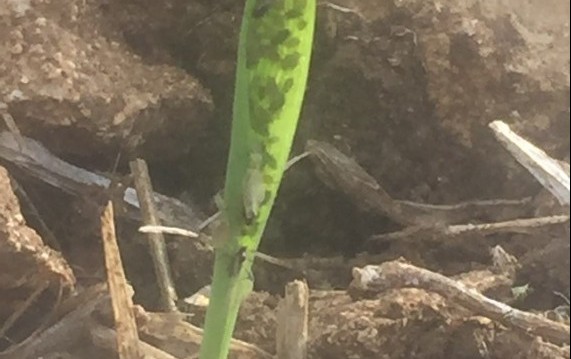The latest monitoring by AHDB and Rothamsted reports aphid activity is rising, particularly the numbers of bird cherry-oat aphids. In early October numbers rose by 35% to above the 10 year mean, at all but two sites in the UK.
Subsequently there have been reports of a major aphid flight along the south coast, meaning that cereal crops are at high risk.
Elle recommends that crops sown in high risk areas, should use Deter or Redigo Deter for early drilled crops. “This will provide about 6-8 weeks protection when the crop is at its most vulnerable during emergence and establishment.”
“Where seed has not been protected to use an aphicide spray, and don’t delay treatment when warnings are issued.”
“The minute the crop pokes through the ground it is at risk, and as the current threat is so high the advice would be to spray an aphicide onto the crop around the 1 leaf stage, don’t wait for 2 leaves – this should provide about 7 days repellant activity – that’s providing the aphids show no sign of resistance.”
Generally, after the first application of a pyrethroid then the T-sum calculations begin, or if you have neonicotinoid dressed seed then the calculations begin at the end of the protective period of the insecticide seed dressing, she says.
“However in light of the current high threat, the follow-up spray may be required sooner than 170 days degrees if high flights continue.”
“If unsure about risk levels the AHDB Aphid News alert is really useful and worth signing up to. “




